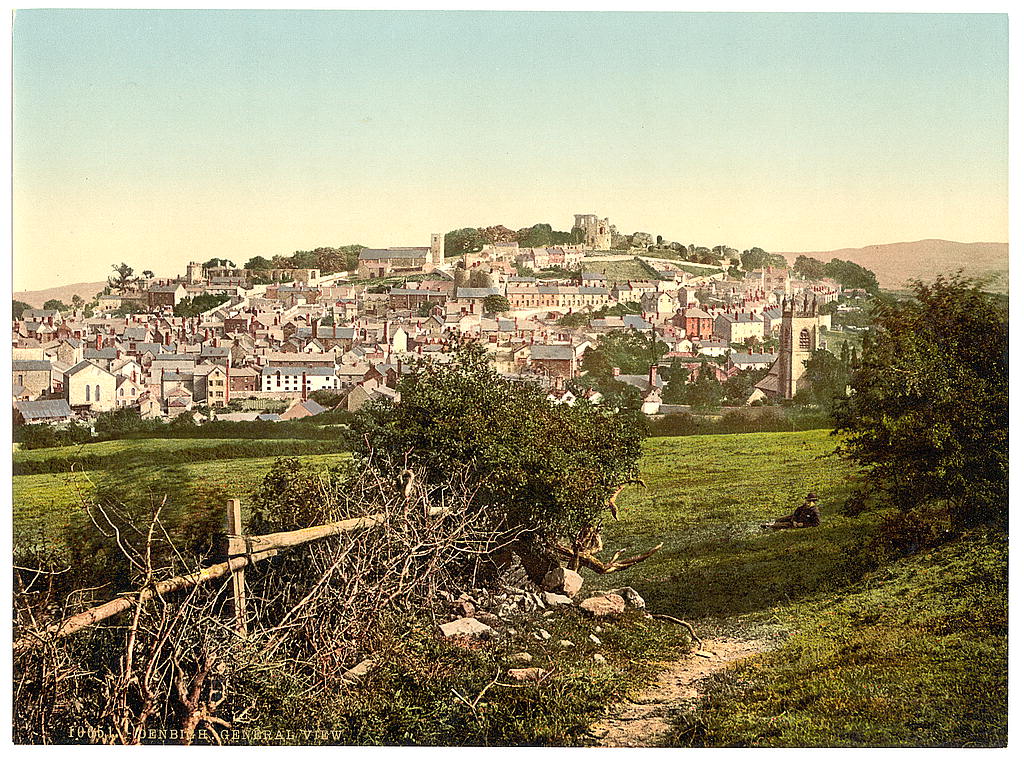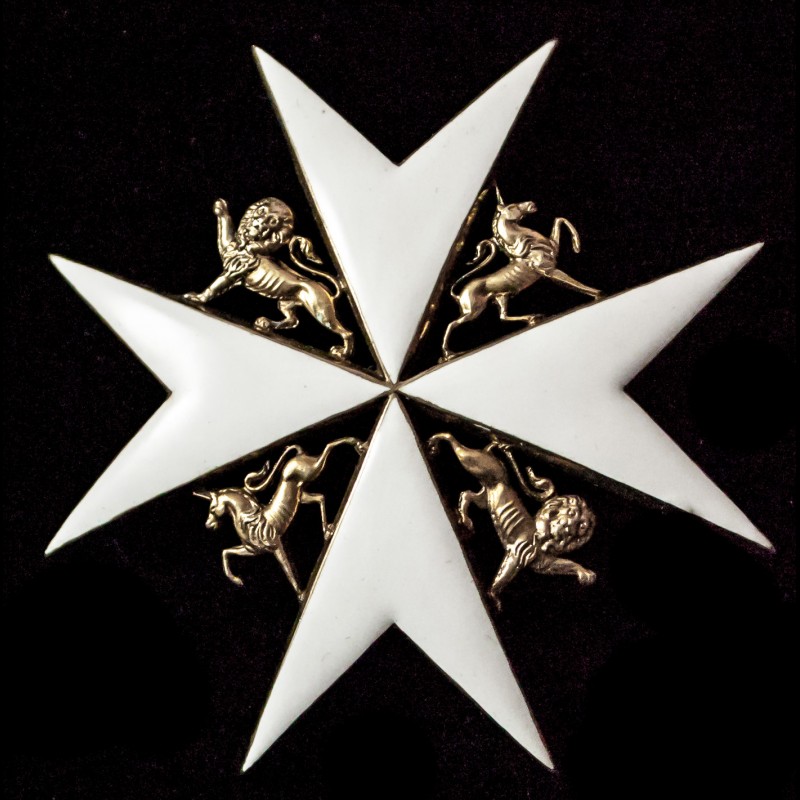|
North Wales Hospital
The North Wales Hospital ( cy, Ysbyty Gogledd Cymru) is a Grade II* listed building in Denbigh, Denbighshire, Wales. Designed by architect Thomas Fulljames, building started in 1844 and completed in 1848. Initially a hospital for up to 200 people with psychiatric illness, by the mid-20th century it housed 1,500 patients. The institution was wound down as a healthcare facility from 1991, finally closing in 1995. There was much damage caused to the structure and its contents in the years subsequent to closure. The site was compulsorily purchased by Denbighshire Council in 2018 and plans were announced late that year for its redevelopment as housing. History Background The origins of North Wales Hospital lay in a reform movement for care of insane people that began in the late 18th century and continued until a few years after its opening as the Denbigh Asylum in 1848. Prior to this time the belief had been that the afflictions of insane people should be dealt with by such methods ... [...More Info...] [...Related Items...] OR: [Wikipedia] [Google] [Baidu] |
Denbigh
Denbigh (; cy, Dinbych; ) is a market town and a community in Denbighshire, Wales. Formerly, the county town, the Welsh name translates to "Little Fortress"; a reference to its historic castle. Denbigh lies near the Clwydian Hills. History Denbigh Castle, together with its town walls, was built in 1282 by order of King Edward I. The Burgess Gate, whose twin towers adorn the symbol on Denbigh's civic seal, was once the main entrance into the town. The first borough charter was granted to Denbigh in 1290, when the town was still contained within the old town walls. It was the centre of the Marcher Lordship of Denbigh. The town was involved in the revolt of Madog ap Llywelyn in 1294–1295; the castle was captured in the autumn, and on 11 November 1294 a relieving force was defeated by the Welsh rebels. The town was recaptured by Edward I in December. Denbigh was also burnt in 1400 during the revolt of Owain Glyndŵr. During the Wars of the Roses (1455-1487), the tow ... [...More Info...] [...Related Items...] OR: [Wikipedia] [Google] [Baidu] |
Merionethshire
, HQ= Dolgellau , Government= Merionethshire County Council (1889-1974) , Origin= , Status= , Start= 1284 , End= , Code= MER , CodeName= Chapman code , Replace= Meirionnydd , Motto= Tra môr, tra Meirion (While the sea lasts, so shall Meirionnydd) , Divisions= , DivisionsNames= , DivisionsMap= , Image= Flag of Merionethshire , Map= , Arms= ''Coat of arms of Merionethshire County Council'' , Civic= , PopulationFirst= 35,315Vision of Britain 1831 Census/ref> , PopulationFirstYear= 1831 , AreaFirst= , AreaFirstYear= 1831 , DensityFirst= 0.1/acre , DensityFirstYear= 1831 , PopulationSecond= 45,565 , PopulationSecondYear= 1911 , AreaSecond= , AreaSecondYear= 1911/1961 , DensitySe ... [...More Info...] [...Related Items...] OR: [Wikipedia] [Google] [Baidu] |
Magic Lantern
The magic lantern, also known by its Latin name , is an early type of image projector that used pictures—paintings, prints, or photographs—on transparent plates (usually made of glass), one or more lens (optics), lenses, and a light source. Because a single lens inverts an image projected through it (as in the phenomenon which inverts the image of a camera obscura), slides were inserted upside down in the magic lantern, rendering the projected image correctly oriented. It was mostly developed in the 17th century and commonly used for entertainment purposes. It was increasingly used for education during the 19th century. Since the late 19th century, smaller versions were also mass-produced as toys. The magic lantern was in wide use from the 18th century until the mid-20th century when it was superseded by a compact version that could hold many 35 mm photographic slides: the slide projector. Technology Apparatus The magic lantern used a concave mirror behind a light s ... [...More Info...] [...Related Items...] OR: [Wikipedia] [Google] [Baidu] |
Association Football
Association football, more commonly known as football or soccer, is a team sport played between two teams of 11 players who primarily use their feet to propel the ball around a rectangular field called a pitch. The objective of the game is to score more goals than the opposition by moving the ball beyond the goal line into a rectangular framed goal defended by the opposing side. Traditionally, the game has been played over two 45 minute halves, for a total match time of 90 minutes. With an estimated 250 million players active in over 200 countries, it is considered the world's most popular sport. The game of association football is played in accordance with the Laws of the Game, a set of rules that has been in effect since 1863 with the International Football Association Board (IFAB) maintaining them since 1886. The game is played with a football that is in circumference. The two teams compete to get the ball into the other team's goal (between the posts and under t ... [...More Info...] [...Related Items...] OR: [Wikipedia] [Google] [Baidu] |
Turkish Bath
A hammam ( ar, حمّام, translit=ḥammām, tr, hamam) or Turkish bath is a type of steam bath or a place of public bathing associated with the Islamic world. It is a prominent feature in the culture of the Muslim world and was inherited from the model of the Roman '' thermae.'' Muslim bathhouses or hammams were historically found across the Middle East, North Africa, al-Andalus (Islamic Spain and Portugal), Central Asia, the Indian subcontinent, and in Southeastern Europe under Ottoman rule. A variation on the Muslim bathhouse, the Victorian Turkish bath, became popular as a form of therapy, a method of cleansing, and a place for relaxation during the Victorian era, rapidly spreading through the British Empire, the United States of America, and Western Europe. In Islamic cultures the significance of the hammam was both religious and civic: it provided for the needs of ritual ablutions but also provided for general hygiene in an era before private plumbing and s ... [...More Info...] [...Related Items...] OR: [Wikipedia] [Google] [Baidu] |
Chloral Hydrate
Chloral hydrate is a geminal diol with the formula . It is a colorless solid. It has limited use as a sedative and hypnotic pharmaceutical drug. It is also a useful laboratory chemical reagent and precursor. It is derived from chloral (trichloroacetaldehyde) by the addition of one equivalent of water. History Chloral hydrate was discovered in 1832 by Justus von Liebig in Gießen when a chlorination ( halogenation) reaction was performed on ethanol. Its sedative properties were observed by Rudolf Buchheim in 1861, but described in detail and published only in 1869 by Oscar Liebreich; subsequently, because of its easy synthesis, its use became widespread. It was widely used for sedation in asylums and in general medical practice, and also became a popular drug of abuse in the late 19th century. One recreational user was the poet and illustrator Dante Gabriel Rossetti. Chloral hydrate is soluble in both water and ethanol, readily forming concentrated solutions. A solution of ... [...More Info...] [...Related Items...] OR: [Wikipedia] [Google] [Baidu] |
St John Ambulance Association
St John Ambulance is the name of a number of affiliated organisations in different countries which teach and provide first aid and emergency medical services, and are primarily staffed by volunteers. The associations are overseen by the international Order of St John and its priories (national branches). History The first such organisation to be founded was the St John Ambulance Association, which was founded in 1877 in England.''The Difference – newsletter from St John Ambulance'', (Nov 2014) p4 "A Brief History of St John Ambulance" Its first uniformed first-aiders were founded in 1887 as the St John Ambulance Brigade.M Durrant (1948) ''American Journal of Nursing'' 48 (12) pp763–765 "St. John Ambulance Brigade" These two have since been merged into a single association. St John Ambulance now have over 40 national organisations, many of which are affiliated with Johanniter International, and over 500,000 volunteers worldwide. The Order of St John owns the brand name in ... [...More Info...] [...Related Items...] OR: [Wikipedia] [Google] [Baidu] |
Welsh Language
Welsh ( or ) is a Celtic language of the Brittonic subgroup that is native to the Welsh people. Welsh is spoken natively in Wales, by some in England, and in Y Wladfa (the Welsh colony in Chubut Province, Argentina). Historically, it has also been known in English as "British", "Cambrian", "Cambric" and "Cymric". The Welsh Language (Wales) Measure 2011 gave the Welsh language official status in Wales. Both the Welsh and English languages are ''de jure'' official languages of the Welsh Parliament, the Senedd. According to the 2021 census, the Welsh-speaking population of Wales aged three or older was 17.8% (538,300 people) and nearly three quarters of the population in Wales said they had no Welsh language skills. Other estimates suggest that 29.7% (899,500) of people aged three or older in Wales could speak Welsh in June 2022. Almost half of all Welsh speakers consider themselves fluent Welsh speakers and 21 per cent are able to speak a fair amount of Welsh. The Welsh ... [...More Info...] [...Related Items...] OR: [Wikipedia] [Google] [Baidu] |
Commissioners In Lunacy
The Commissioners in Lunacy or Lunacy Commission were a public body established by the Lunacy Act 1845 to oversee asylums and the welfare of mentally ill people in England and Wales. It succeeded the Metropolitan Commissioners in Lunacy. Previous bodies The predecessors of the Commissioners in Lunacy were the Metropolitan Commissioners in Lunacy, dating back to the Madhouses Act 1774, and established as such by the Madhouses Act 1828. By 1842 their remit had been extended from London to cover the whole country. The Lord Chancellor's jurisdiction over lunatics so found by writ of ''De Lunatico Inquirendo'' had been delegated to two Masters-in-Chancery. By the Lunacy Act 1842 (5&6 Vict. c.64), these were established as the ''Commissioners in Lunacy'' and after 1845 they were retitled ''Masters in Lunacy''.Jones (2003) p.222 Establishment Anthony Ashley-Cooper, Seventh Earl of Shaftesbury was the head of the Commission from its founding in 1845 until his death in 1885. The ... [...More Info...] [...Related Items...] OR: [Wikipedia] [Google] [Baidu] |
National Health Service
The National Health Service (NHS) is the umbrella term for the publicly funded healthcare systems of the United Kingdom (UK). Since 1948, they have been funded out of general taxation. There are three systems which are referred to using the "NHS" name (NHS England, NHS Scotland and NHS Wales). Health and Social Care in Northern Ireland was created separately and is often locally referred to as "the NHS". The four systems were established in 1948 as part of major social reforms following the Second World War. The founding principles were that services should be comprehensive, universal and free at the point of delivery—a health service based on clinical need, not ability to pay. Each service provides a comprehensive range of health services, free at the point of use for people ordinarily resident in the United Kingdom apart from dental treatment and optical care. In England, NHS patients have to pay prescription charges; some, such as those aged over 60 and certain state ... [...More Info...] [...Related Items...] OR: [Wikipedia] [Google] [Baidu] |







